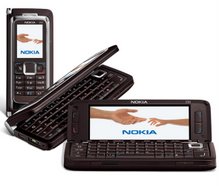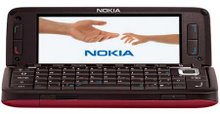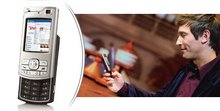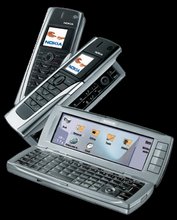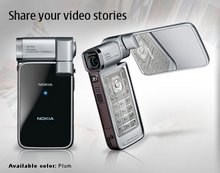


- Full QWERTY keyboard (when device is opened)
- 65,536 color screen
- Bluetooth
- 80 MB of built in storage, up to 2GB with MMC card
- BlackBerry Connect support
- 5 party calling with speakerphone
- EDGE high-speed data
- Built-in office applications supporting documents, spreadsheets, presentations, and a PDF viewer
- MP3 player
Look for the Nokia 9300 starting in the first quarter of 2005. Pricing is unannounced but is said to be between $785 to $845 without a carrier subsidy. A version will be available for the North American market (GSM850/1800/1900 MHz).













